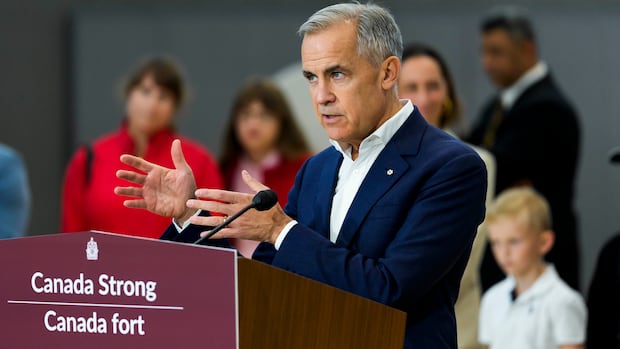Ontario’s move to order public servants to work from the office full time is raising questions about its potential impact on the government’s ability to recruit and retain skilled staff.
Premier Doug Ford’s government has told the 60,000 members of the Ontario Public Service (OPS) they must be at their workplace at least four days a week starting in October and then in the office full time from early January.
The OPS consists of people who work in the ministries and agencies directly controlled by the province. Roughly half of that workforce has had the option to work remotely up to twice a week since at least April 2022, as the COVID-19 pandemic waned and Ontario’s return-to-office plan kicked in.
Taking away that option is stirring up a debate about its merits for productivity, employee well-being and attracting talent.
Eliminating remote work has a particular impact on the union AMAPCEO, which represents 14,000 professional and administrative staff, many of whom opted for the hybrid model of splitting their time between an office and home.
AMAPCEO president Dave Bulmer says the Ford government’s decision will affect both recruitment and retention in the OPS.
“I represent professionals, highly educated people who can choose where to work in the market, the best and the brightest,” Bulmer said in an interview with Radio-Canada.
“Nobody’s going to come to an OPS that doesn’t have hybrid work,” he said. “We have lots of people who are with the OPS who are probably going to move on now.”
‘Attracting, developing, retaining top talent’
Bulmer argues the government’s move runs counter to its own official human resources strategy, dubbed the OPS People Plan.
The chief goal stated in the plan: “Attracting, developing, and retaining top talent that reflects Ontario’s diversity.”
Maria Gintova, an assistant professor of political science and public policy at McMaster University, has researched the impact of flexible work arrangements on public sector employees.
Those employees generally viewed mandatory work-from-office rules as “government going with their idea of how things should be done, without any kind of consultations, and not listening to the public service,” she said in an interview with CBC News.
Ontario Premier Doug Ford is ordering the province’s 60,000 public servants back to the office full time starting in January. CBC’s Mike Crawley has the details.
Gintova, who previously held policy jobs in several Ontario ministries, says allowing people to work remotely helps boost diversity in the workforce by opening up jobs to a geographically wider field of candidates.
“Remote work is a key for improving work-life balance,” Gintova added.
While Ford says he believes government employees are more productive when they are in the office, Gintova says there’s no evidence to suggest that’s accurate.
Mulroney spokesperson defends move
A spokesperson for Treasury Board President Caroline Mulroney, the cabinet minister who oversees the OPS, says moving to a standard of five days per week in the workplace reflects what’s happening in workplaces throughout Ontario.
“Our standard is also aligned with other provinces, cities, and organizations across Canada,” Mulroney’s director of communications, Andrea Chiappetta, said in an email to CBC News.
“We are confident in our ability to attract and retain top talent into the public service,” Chiappetta said.

Provincial data puts the turnover rate in the Ontario public service at six per cent. The OPS People Plan includes a target of reducing that to 4.2 per cent by 2026.
The province also wants to boost another measure of the lure of an OPS job: the number of applicants per vacancy. It has averaged 28.4, and the government’s target is 42.8
Scrapping the option to work remotely neither helps attract talented people to the public sector nor helps keep them there, says Marion Nader, CEO of Nexus Strategy Group and a former senior advisor with the Ontario NDP.
“It shuts out a huge labour pool because people now want that flexibility,” said Nader in an interview with CBC News. “People want the flexibility to be able to at least work from home a couple of days a week.”
Nader believes the Ford government has an ulterior motive with the plan: reducing the number of public service jobs through attrition.
“The return to the office policy isn’t about productivity. It’s more about a downsizing strategy for the OPS,” she said.

John Fraser, the Ontario Liberal Party’s labour critic, says the Ford government needs to take a more thoughtful and balanced approach to the issue.
“Telecommuting has benefits for our economy, families’ lives, and our environment,” Fraser said in an email. “The reality is this is where the world is going.”
City of Brampton follows suit
The Ford government’s move has already prompted at least one other public sector employer in Ontario to follow suit.
Brampton Mayor Patrick Brown said Friday he plans to follow the province’s lead and require city staff to return to full-time in-office work on an identical timeline.
Four of Canada’s big banks — RBC, Scotiabank, BMO and TD — recently announced that staff at their Toronto headquarters must spend at least four days a week in the office, effective this fall.
The province’s announcement comes just two weeks after AMAPCEO ratified a new collective agreement, and while the other major union representing provincial public servants, OPSEU, is in the midst of negotiations.
Hybrid work has “provided measurable benefits in productivity, retention, and well-being,” said OPSEU in a statement.
Ontario’s mandate for OPS staff to be in the office four days per week takes effect on Oct. 20, with the full-time-in-office rule kicking in on Jan. 5, 2026.
Employees who currently have what’s called an “alternative work arrangement” — a formal, signed agreement to work from a different location — will not have to follow the new in-office mandate. A government official says those will remain valid until the expiry date in each agreement.
The two unions are encouraging members who still want to work remotely but don’t have such an arrangement in place to request them from OPS management.








